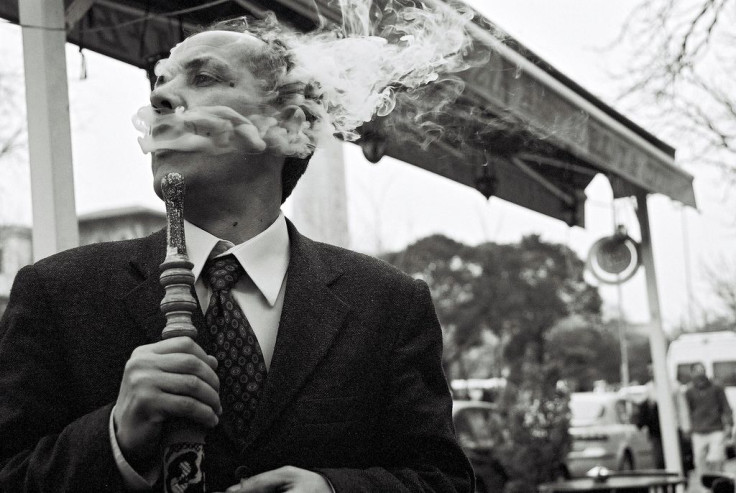An Hour Of Hookah Equals 100 Cigarettes, So Why Is It More Socially Acceptable?

The Food and Drug Administration recently banned flavored tobacco found in certain cigarette brands as part of the new Family Smoking Prevention and Tobacco Control Act. However, tobacco users can still walk into any local “hookah bar” and find an assortment of attractive flavors. A report issued by the World Health Organization has revealed that around an hour of smoking hookah can be just as detrimental to our health as 100 cigarettes.
Considered a fixture in most Persian and Indian cultures, hookah is a water pipe used to smoke tobacco that comes in a variety of different flavors, including apple, mint, cherry, chocolate, watermelon, and even cappuccino. Compared to cigarettes which are generally smoked in a solitary setting, smoking hookah tends to be a social engagement where a group of individuals sit around a water pipe passing the mouthpiece from person to person.
The WHO report aims to discount a popular belief that the smoke emerging from a hookah pipe is somehow less toxic than that of a cigarette. In reality, hookah tobacco delivers the same amount of nicotine with the similar addictive nature seen in cigarette smokers when frequent use is reported. Although more flavorful than traditional cigarettes, hookah tobacco contains similar toxins that can lead to lung disease, heart disease, and other health complications.
According to the Centers for Disease Control and Prevention, the number of high school and college-aged students in the U.S. who smoke hookah has steadily increased over the past few years. The Monitoring the Future survey taken in 2010 found that one out of every five male and one out of every six female high school seniors in the U.S. reported using a hookah in the past year. Companies have even started marketing electronic hookah products that turn liquid containing nicotine, flavorings, and other chemicals into inhalable vapor.
Aside from hookah tobacco’s toxic agents that can result in various chronic disease, tobacco juices found in hookah has been linked to mouth irritation and an increased risk for oral cancer development. Charcoal that is used to heat hookah tobacco also increases a user’s health risks by producing high levels of carbon monoxide, metals, and carcinogenic properties. Babies born to mothers who smoked hookah during pregnancy have a higher risk for respiratory diseases and weigh an average of 3.5 ounces less than babies born to nonsmokers.
Although hookah use in Persia and India dates back centuries, use in the U.S. is a relatively new occurrence. Smoking hookah is considered more socially acceptable among members of the younger generation compared to cigarettes. In addition to the social setting it tends to be used in, part of its attraction has been the deceptive belief that it is less harmful than cigarettes. A recent study conducted at the University of Pittsburgh School of Medicine suggested that anti-hookah campaigns would be more successful if they targeted the attractive and romantic allure of hookah.
"It was surprising to learn that college students, even when they were aware of the health dangers associated with hookah tobacco smoking at baseline, still went on to use a hookah for the first time," Dr. Jaime Sidani, senior research specialist in the Program for Research on Media and Health (PROMH) at Pitt., said in a statement. "However, students who had less positive attitudes toward hookah smoking were significantly less likely to initiate. This suggests that countering positive attitudes may be at least as effective as emphasizing harm in preventing initiation of hookah tobacco smoking."



























